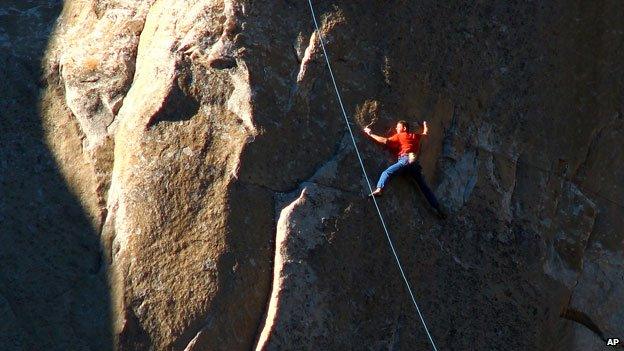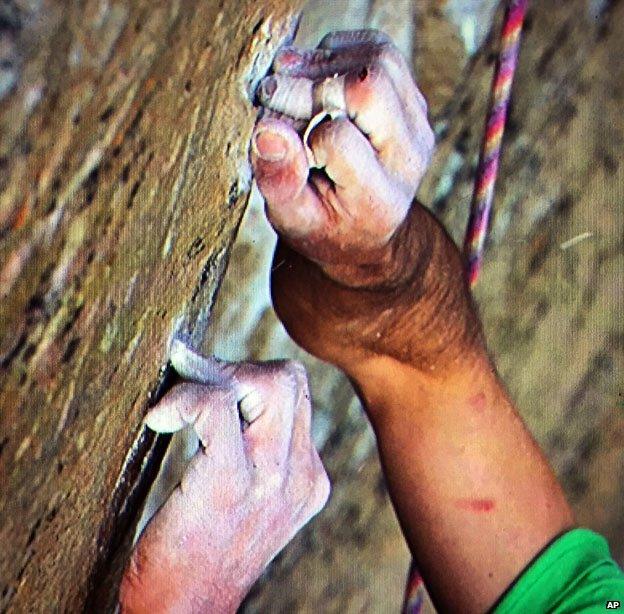Who What Why: How do you climb a smooth rock face?
- Published

Two men have free climbed the Dawn Wall of Yosemite's El Capitan rock formation, a feat no-one has ever managed before. The 3,000-foot (914m) sheer granite face is one of the most difficult climbs in the world and frighteningly smooth. How did they hold on?
"The holds are quite literally matchsticks on a vertical face," says Leo Houlding, a professional climber who has climbed El Capitan by a different route.
"Your main point of contact when you are climbing is the tips of your fingers and obviously hanging on to tiny little holds with all your bodyweight, and all the power you can create, starts to shred your fingertips," Houlding says.
"And after a week you have very little skin left."
Tommy Caldwell and Kevin Jorgeson, the two climbers who completed their epic climb on Wednesday, had been on the wall since 27 December - two-and-a-half weeks.
.jpg)
They have both taken occasional rest days for the skin on their fingers to recover from what the climb's media manager John Long describes as "pulling down on razor sharp edges".
This is why climbers "tend to use expensive skin care products" Houlding says.
Friction is key to the whole endeavour. The rock face is not quite like a billiard ball, it has some cracks, lumps and rough edges.
"We wear climbing shoes which are very tight-fitting high-friction rubber," Houlding says, "quite stiff so you can stand on tiny little edges and make your way up."
Using headlamps to light their way, Caldwell and Jorgeson often climb at night when the temperature is cooler - this means their hands sweat less, and there is more friction between their rubber shoes and the granite.

The climbers put chalk powder on their fingers to help them grip
"Even in December or January in California it's still quite warm," says Houlding. "So they're climbing by night to try and find that little bit more friction."
Free climbers don't use ropes to ascend a rock face, though Caldwell and Jorgeson have ropes to catch them if they fall - and to descend to their hanging "portaledges" when they've completed one or more of the 32 sections of the climb.
These portaledges consist of a tent attached to an aluminium frame hanging from an anchor in the rock face. Even while resting inside, the men constantly wear harnesses, which are also tied to the anchor.
"It looks hazardous, but it's really quite safe," says Houlding. "It's good fun. It's beautiful. California at this time of year is amazing."
The Dawn Wall is arguably the toughest rock to climb in the world
Reporting by Elle Metz
Subscribe to the BBC News Magazine's email newsletter to get articles sent to your inbox.